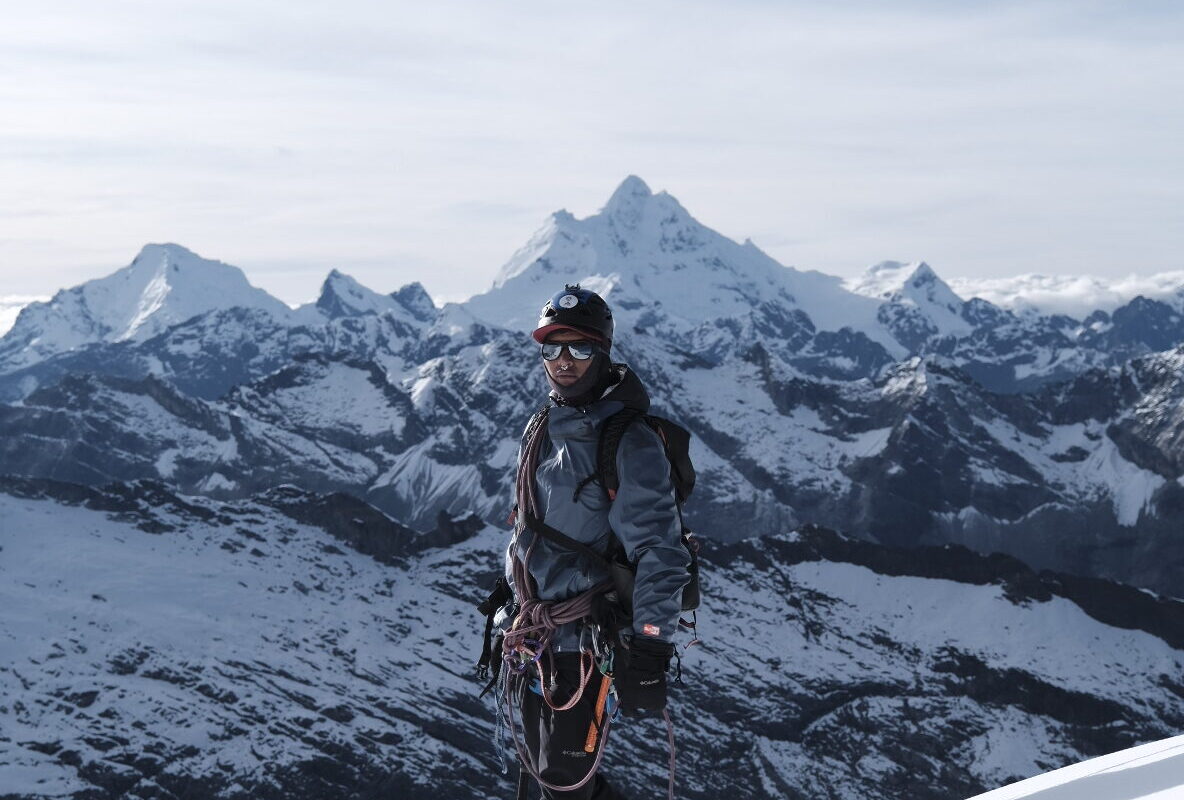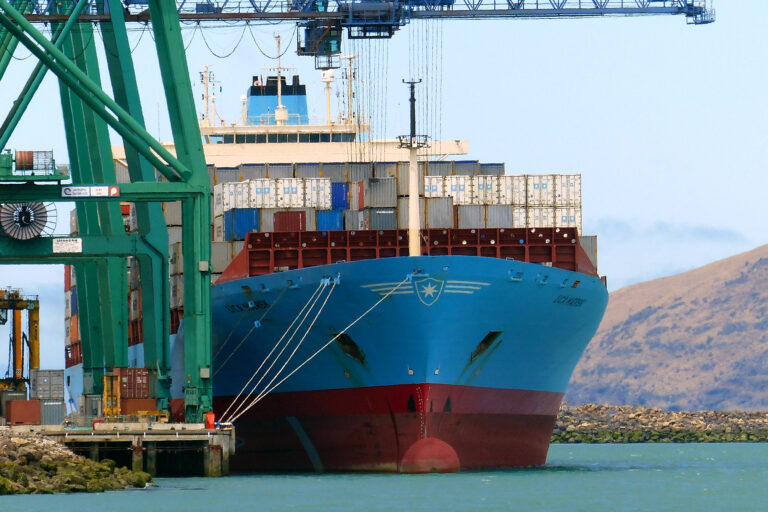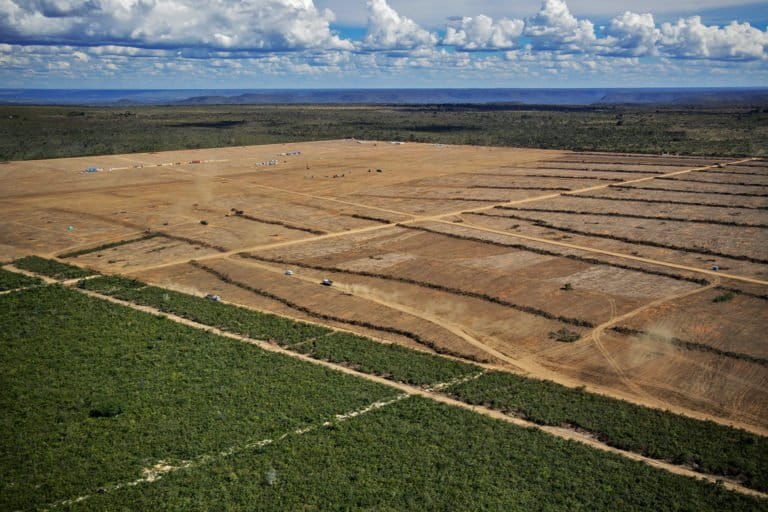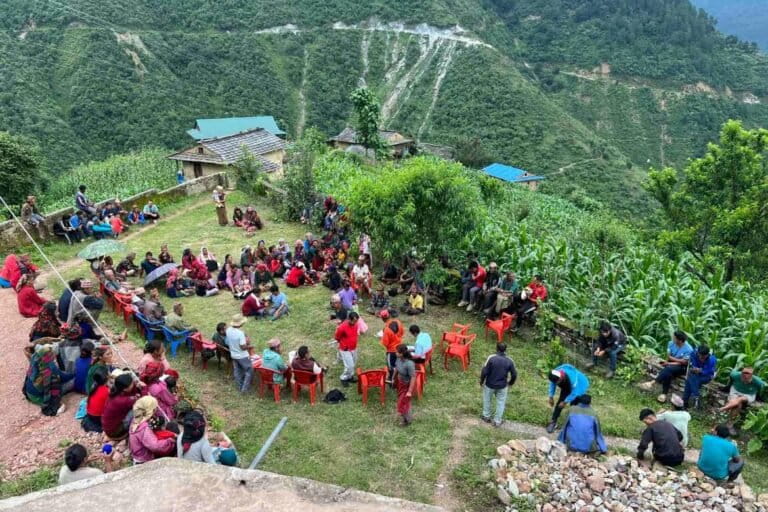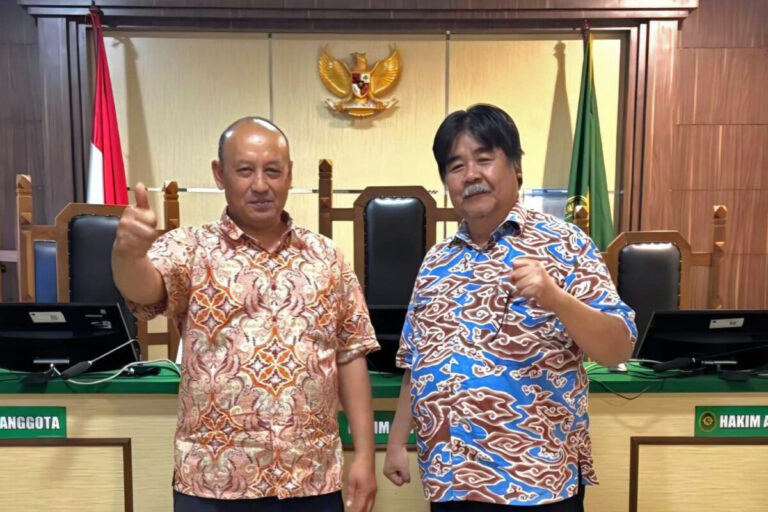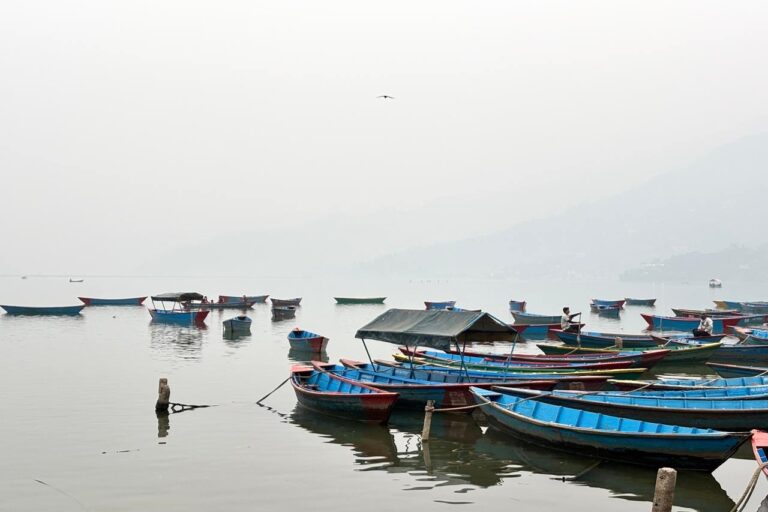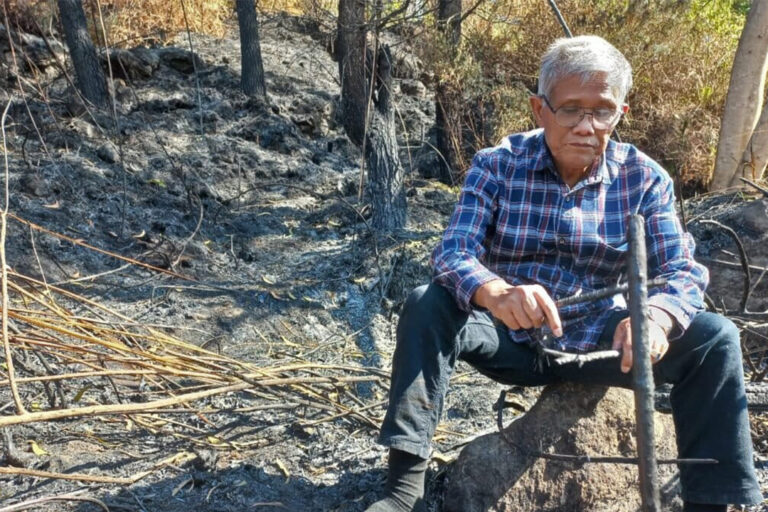- Industrial metals ores occur across the Amazon basin; this article offers an overview of their geological origins in the region and their economic importance.
- In Brazil, in Carajás and Pará, large deposits are focused on iron ore production, which has grown by 50% in recent years. Copper is also being exploited and recently the expansion and diversification towards strategic metals necessary for the transition to renewable energies has begun.
- In Venezuela and Peru there are other similar examples of mines that provide mineral inputs for the manufacture of steel and iron.
There are a multitude of mineral ores used to produce industrial metals, which can be organized into four major groups with similar geological histories.
Iron (Fe) and manganese (Mn) are essential components to steel and, as such, are in constant demand by manufacturers and the construction industries. Ferro-manganese ores are found within the ancient sedimentary rocks that were created when the first photosynthetic organisms were transforming the Earth’s atmosphere during the Archean Eon as oxygen reacted with dissolved iron in primeval oceans to create ferrous oxides, hematite and magnetite (FeO, Fe2O3, Fe3O4). These ancient sedimentary rocks were uplifted during the ancient orogenies that moulded the Amazon Craton and occur in three separate landscapes of the Eastern Amazon: the Carajás province in Eastern Pará, a similar area across the Amazon River in Amapá and the Imataca formation just south of the Orinoco River in Venezuela.
Base metals, particularly copper (Cu), zinc (Zn), molybdenum (Mo), nickel (Ni) and lead (Pb), are used by a wide range of industries, but are particularly important for electrical devices and industrial alloys. These industrial metals tend to occur in polymetallic ores associated with magma that originated deep within the Earth’s crust; ore bodies are found along the margins of magmatic intrusion or within fissures in the surrounding matrix rock. On the Amazon Craton, intrusions are associated with ancient orographic events and their idiosyncratic distribution reflects the complex geological evolution of the Precambrian Era. In the Andes, intrusions exist as ‘porphyries’ that are linked to relatively recent volcanic events in the western Cordillera, or as plutons embedded in sedimentary rocks of the eastern Cordillera that were uplifted during the Mesozoic.
Porphyries are also a source of precious metals, such as gold (Au) and silver (Ag), but also platinum (Pt) and palladium (Pd), which are important inputs to electronic devices; less common metals include niobium (Nb), titanium (Ti), tungsten (W) and tantalum (Ta). Typically, polymetallic miners seek to harvest multiple elements extracted at specialized smelters from concentrates that are the principal export commodity of polymetallic mines.
High-quality bauxite ores, such as those found in the Amazon, have elevated concentrations of gibbsite [Al2(OH)3], which make them particularly economical for the production of aluminium. Bauxite ores are found on upland plateaus, which were created by sedimentation along the margins of the Brazilian and Guiana Shields during the Mesozoic Era. These landforms were uplifted during the Pleistocene when the Amazon River carved a deep passage through the Amazon Rift Valley; subsequently, they were subject to the extreme weathering typical of high-rainfall regions with tropical climates that leached most of the silica out of what are essentially paleo-soils.


The Carajás mining district
The Carajás mountains and surrounding landscapes contain some of the most remarkable mineral deposits in the world. The oldest and largest mine was opened in the Serra Norte de Carajás (Parauapebas municipality) in 1984 by the Companhia Vale do Rio Doce to exploit an ore-body with the highest concentration of elemental iron on Earth (67%). In 2022, that facility consisted of eight separate pits covering 4,500 hectares and producing more than 150 million tonnes of iron ore each year. Production doubled in 2016 when Vale started production at Serra Sul de Carajás (Canaã de Carajás), about sixty kilometers south of the original mine. Vale operates a third iron-ore mine at Serra Leste (Curionópolis municipality) located just a few kilometers from Serra Pelada, the notorious wildcat gold mine of the 1980s. In addition, there are two manganese mines: Azul (Parauapebas municipality), which is operated by Vale, and Buritirama (Marabá municipality), which is owned by Buriti Group, Brazil’s largest manganese producer.
Under current rates of exploitation, the original mines at Vale’s facility in the Serra Norte will produce for another ten years. However, there are several additional ore-bearing structures nearby that should extend the life of the industrial mill for decades. Serra Sul has even larger reserves and can maintain current levels of production for ~110 years. The southern facility, also known as S11D, is a classic example of a brownfield investment. Vale was able to mobilize large capital resources due to the limited risk associated with a fully explored mineral deposit, unwavering government support and minimal local opposition.
That investment, reported at US$14.7 billion, including US$6.4 for the new open-pit mine and a semi-automated, conveyer-belt processing mill with a state-of-the-art ‘dry’ tailings storage facility. An additional US$7.6 billion was invested in logistic infrastructure, which included a two-track expansion of the Estrada de Ferra do Carajás, its extension to the Serra Sul and an increase in the capacity at the export terminal at São Luís do Maranhão. Annual exports of iron ore from the three facilities approached 200 million tonnes in 2020, which were valued at ~US$28 billion, an increase of fifty per cent in volume and 150 per cent in value when compared to 2015, the year before the inauguration of S11D.
Although most of the iron ore is exported or transhipped to steel mills in Southern Brazil, a significant portion is processed a few kilometers from the mine at pig-iron plants and a steel mill near Açailândia in the state of Maranhão. These plants are unique because they use charcoal, both as a source of energy and as the reducing agent in the steel-making process (instead of coke). In the 1980s and 1990s, pig-iron producers sourced their charcoal from landholders who were clearing natural forest to establish cattle ranches. Since about 2000, however, they have used charcoal produced by eucalyptus plantations that were grown on land deforested in the previous decades. They now proudly proclaim their ESG credentials and aggressively market their production as green steel.
The Carajás mining district is also remarkable for ore bodies associated with magmatic intrusions referred to by geologists as ‘iron-ore, copper and gold’ (IOCG) deposits. Vale has developed several of these polymetallic mines on the landscapes surrounding the Serra de Carajás. The oldest, Igarapé–Bahia (Parauapebas), was opened as a gold mine in 1990 and only operated for twelve years. However, a copper ore-body was discovered underneath the exhausted gold resource, which eventually will be exploited when market conditions justify the investment.

The first large-scale copper mine in the Brazilian Amazon was opened by Vale in 2007 at Salobo (Marabá). It started production in 2012, doubled its capacity in 2014 and expanded again in 2020. In 2019, it generated about US$500 million in gross revenues on an investment estimated at US$7 billion. Salobo is expected to produce copper and gold for another thirty years. Vale expanded and diversified its mining operations in the Carajas district with an even larger copper mine at Sossego in 2012 (Canaã de Carajás), copper and nickel mines at Onça Puna in 2011 (São Felix do Xingu and Ourilândia do Norte).
Other companies are opening new polymetallic mines in the Carajás district. These include Antas, a copper mine owned by the Australian company Oz Minerals, and Vermelho, a nickel-cobalt project operated by the UK-based holding company Horizonte Minerals, both of which were opened in 2022 (Curionópolis). A separate subsidiary of Horizonte Minerals, Araguaia Nickel, will open two pits in 2024 in the municipalities of Rio Maria and Conceição de Araguaia. The expansion and diversification of the mining industry in the greater Carajás district is being driven by the market for strategic metals necessary for the transition to renewable energy. A review of mining concessions in different stages of exploration and development shows that investors have identified a base metal as the mineral of primary interest in more than 530 concessions in the five municipalities surrounding the Carajás mineral district.
Several of the mines operated by Vale are all located within Floresta Nacional (FLONA) de Carajás, a multiple use protected area that is strictly off limits to settlers. Its formal designation as a protected area was part of a policy compromise that allows mining in FLONAs created prior to 2000, while prohibiting it in FLONAs established thereafter. In 2017, part of the FLONA de Carajás was declared a national park (PARNA Campos Ferruginosas), a decision intended to protect the endemic flora unique to these iron-rich soils. Nonetheless, the map of mineral concessions continues to show the existence of numerous claims within the national park, all of which predate the creation of the park.

Amapá and the RENCA
Industrial mining began in the Amazon in 1953 when a joint venture between an influential Brazilian entrepreneur and Bethlehem Steel opened the Serra do Navio manganese mine in what was then the federal territory of Amapá. It is an example of ‘enclave’ mining where an isolated complex of facilities operates as a quasi-autonomous entity that typically include the mine, a company town, railroad, industrial plant and port facilities. Over its forty-year life span, Serra do Navio produced forty million tonnes of high-quality manganese, exporting about fifty per cent to Europe and North America with the rest supplying a key input to a nascent steel industry in Southern Brazil. The main mineral resource was eventually exhausted, but the industrial infrastructure continues to exploit a low-grade iron ore deposit (< 45% Fe) that would not otherwise be economically viable.
Amapá is not without additional mineral resources. Western Amapá and adjacent areas of Northern Pará are located within geological formations not unlike the Carajás mineral district. Most of this area was incorporated into the Reserva Nacional de Cobre e Associados (RENCA) by the military government in 1984. A proposal to open the RENCA for exploitation was considered in 2017 during the government of Michel Temer. The proposal was vociferously opposed by environmental and social advocates intent on protecting two regional conservation units, Floresta Estadual do Paru (Pará) and Reserva de Desenvolvimento Sustentável de Rio Iratapuru (Amapá), as well as two Indigenous territories, Waiãpi (Amapá) and Rio Paru d’Este (Pará).
The proposed change in status of the RENCA was blocked by a Brazilian court; nonetheless, mining interests seek to reopen the RENCA as part of a policy to promote mining throughout the Amazon. It was a fundamental component of the development strategy of the Bolsonaro administration.

The Arco Minero of Venezuela
Further north, a cluster of world-class iron-ore deposits is located along the extreme northern edge of the Amazon Craton where it borders the Orinoco flood plain in the Venezuelan State of Bolivar. Geologists have christened this the Imataca formation, but it is understood to be a disjunct portion of the same ancient formation that occurs in Serra de Carajás with similarly high mineral grades of iron ore (60–65.5%).
The Imataca deposits were discovered prior to the Carajás formations, and the first mine (El Pao) was opened by Bethlehem Steel in 1951. The mine and associated industrial infrastructure were nationalized in 1978 by the government of Carlos Andrés Pérez when he launched an aggressive development programme fuelled by the exploitation of the nation’s mineral resources. The El Pao mine was decommissioned in 1998, but not before the regional development corporation (Corporación Venezolana de Guayana – CVG) had initiated production at four additional sites (Los Barrancos, San Isidro, Las Pallas and Altamira). Production declined from about 20 million tonnes in 2007 to less than five million tonnes in 2015; the mines were shut down at the height of the economic crisis in 2019. The government periodically announces new investment plans and projects future annual production levels as high as 40 million tonnes.
The country’s total iron-ore reserves are estimated at 2.2 billion tonnes, which would have an approximate value of US$330 billion at international prices in 2022. Investors from China are reported to be engaged in these efforts as part of a plan to retire the approximately US$30 billion in outstanding loans made to the government of Nicholas Maduro. Landscapes adjacent to the Imataca have globally important reserves of gold and bauxite, and Venezuelans refer to the northern sectors of the states of Bolivar and Amazonas area as the ‘Arco Minero.’
The copper porphyries of the Peruvian Andes
The mines located within the High Andes are seldom mentioned when discussing the extractive industries in the Pan Amazon. Nonetheless, the ore-processing facilities of these mines extract water from, and discharge wastewater into, tributaries of the Amazon River. Altogether, they represent about fifty per cent of Peru’s formal mining industry and are a core component of the national economy. Peru has a long history of industrial mining, and there are hundreds of active and derelict underground mines, particularly near the city of Cerro de Pasco, the center of Peru’s mining industry in the twentieth century.
The recent history of Peru’s mining industry is characterized by the transition from underground mines, which exploit localized ore bodies with higher mineral grades and lower waste-rock production, to open-pit mining operations, which exploit voluminous ore bodies with lower mineral grades that create massive amounts of waste rock and tailings. Open-pit mines require very large amounts of financial capital, but they are less risky than an underground mine when evaluated on operational criteria. However, their environmental and social impacts are not fully appreciated by investors, particularly the long-term risk inherent in many tailing-storage facilities.
Prior to 2007, there were seven open-pit mines operating in the Amazonian portion of the Peruvian Andes; since 2010, however, six more have opened and another fourteen are in different stages of development. Four of the original seven were operated by companies controlled by Peruvian companies, two by large multinationals and one by a Canadian gold-mining specialist. Of the fourteen new projects, all but four are controlled by foreign capital, including three from China.
The infusion of investment capital, typically between US$ 1.5 to 3.5 billion per mine, has transformed the Peruvian economy over the last two decades. The fifteen operating mines generated about $US5 billion in 2015, of which about 25 per cent was captured by taxes and royalties. Mines located within Amazonian watersheds represent about forty per cent of Peru’s mining industry; they support ~30,000 direct jobs and perhaps double that number of indirect jobs. Each mine has a lifespan of between fifteen and thirty years, but most are adjacent to ore bodies with similar or slightly lower mineral content. The potential for continued growth in the mining sector remains strong.

The mining sector is credited for the relative health of the Peruvian economy, which had the highest mean growth rate in GDP in Latin America between 2005 and 2020. Peru is not a wealthy country and the unprecedented economic growth allowed it to reduce its poverty rate from 58 per cent to twenty per cent between 2005 and 2019. Unfortunately, extreme poverty increased again to thirty per cent in 2020 due to the Covid-19 Pandemic, and the economic prospects for the Peruvian mining industry situation have become less certain due to an uptick in social conflict. Successive governments have failed to reduce poverty and meet the expectations of its populace.
“A Perfect Storm in the Amazon” is a book by Timothy Killeen and contains the author’s viewpoints and analysis. The second edition was published by The White Horse in 2021, under the terms of a Creative Commons license (CC BY 4.0 license).
To read earlier chapters of the book, find Chapter One here, Chapter Two here, Chapter Three here and Chapter Four here.

Chapter 5. Mineral commodities: a small footprint, a large impact and a great deal of money
- Mineral commodities: the wealth that generates most impacts in the Pan Amazon | Introduction March 21st, 2024
- The environmental and social liabilities of the extractive sector March 26th, 2024
- Mining in the Pan Amazon in pursuit of the world’s most precious metal April 4th, 2024
- Illegal mining in the Pan Amazon: an ecological disaster for floodplains and local communities April, 9th
- The environmental mismanagement of enduring oil industry impacts in the Pan Amazon April, 17th
- Outdated infrastructure and oil spills: the cases of Colombia, Peru and Ecuador April, 25th
- State management and regulation of extractive industries in the Pan Amazon May 2nd, 2024
- Is the extractive sector really favorable for the Pan Amazon’s economy? May 8th, 2024
- Extractive industries look at degraded land to avoid further deforestation in the Pan Amazon May 15th, 2024
- Global markets and their effects on resource exploitation in the Pan Amazon May 21st, 2024
- Sustainability in the extractive industries is a paradox May 29th, 2024
- In the Pan Amazon, environmental liabilities of old mining have become economic liabilities June 5th, 2024
- Solutions to avoid loss of environmental, social and governance investment June 12th, 2024
- The most prominent mining companies in the Pan Amazon – a review June 21st, 2024
- Mineral hotspots in the Pan Amazon June 27th, 2024
- Brasil, Venezuela and Peru: the geography of industrial metals July 5th, 2024
- Industrial minerals in the Pan Amazon July 12th, 2024
- Minerals for agricultural use can already be found in Amazonia July 19th, 2024




